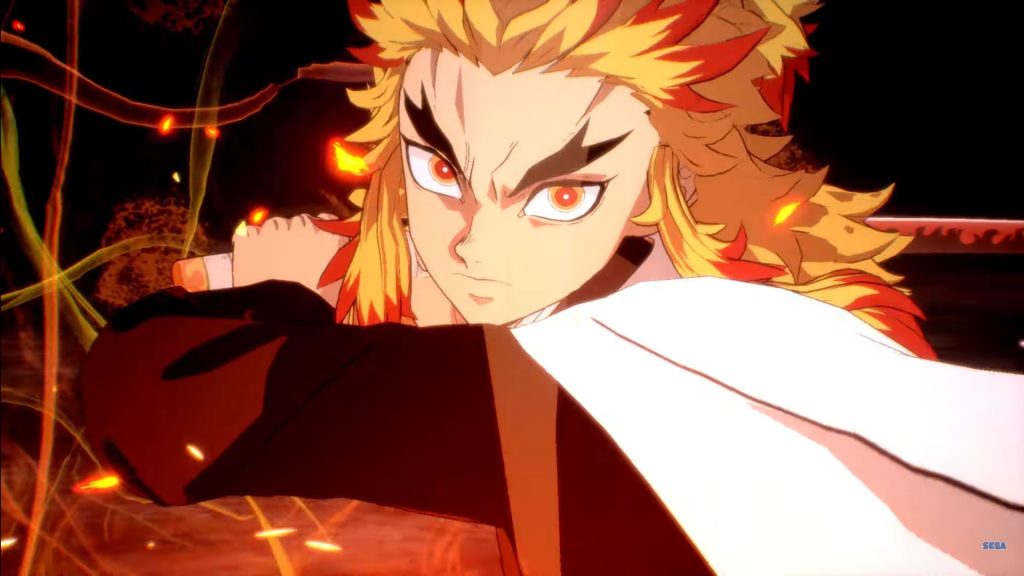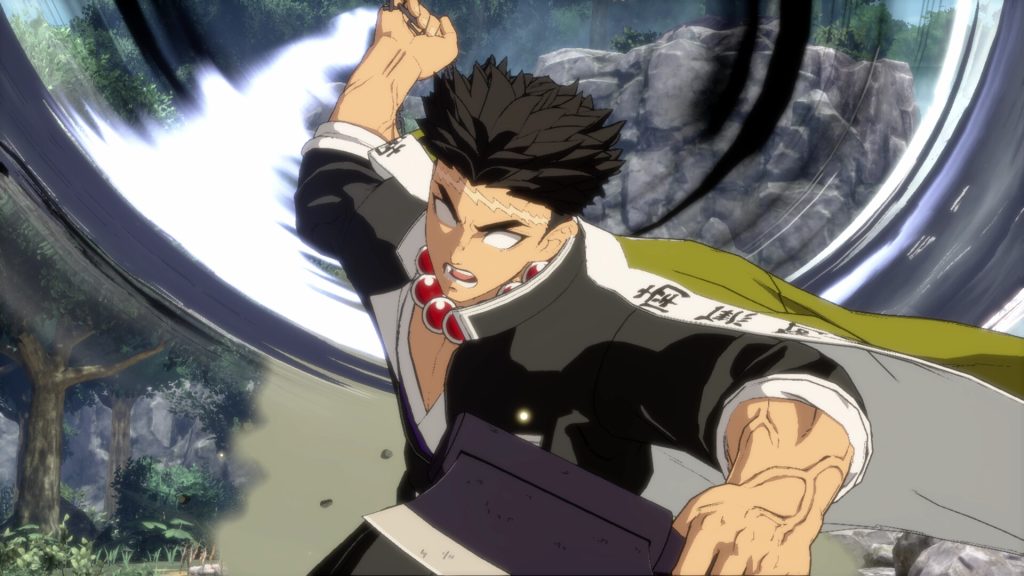Demon Slayer: Kimetsu no Yaiba- The Hinokami Chronicles 2 Review – Faithful and Refined Sequel
If you are already a fan of Demon Slayer, and/or if you enjoyed the first game based on the popular anime that came out a few years ago, then Demon Slayer: The Hinokami Chronicles 2 is an easy recommendation for you. If you liked the original game, then this is easy – this game is literally more of what you liked there, but more, and improved.
The Hinokami Chronicles 2 is taking the exact same template and format that developers CyberConnect2 used the first time around. Where the first game followed the story of the source anime and manga series through to the Mugen Train arc, this one picks up the tale from there and continues it through the Entertainment District, all the way through to the end of the Hashira Training arc.
[embedded content]
“The Hinokami Chronicles 2 is a great adaptation of the arcs it follows, and even if you have no familiarity with the anime or manga, you can follow along.”
That new story is the primary reason for this game’s existence – it makes few changes to the winning formula of the first title other than some tweaks to the mechanics and some QoL additions otherwise. If you enjoy the Demon Slayer story, then this is a fairly good adaptation of it. That last thing cannot be overstated – where these Demon Slayer games win out over the cavalcade of anime based arena fighters that otherwise flood the market is how much effort goes into making sure they stand up to scrutiny as standalone products, even without needing familiarity with the source material.
Even people who have never read the manga or seen the anime can get a good feel for the world of Demon Slayer, its characters, stakes, conflicts, and its narrative, very well simply by playing through the story modes in these games – which is not something I can say for most other anime adaptations of this type.
That trend continues with this game as well. The Hinokami Chronicles 2 is a great adaptation of the arcs it follows, and even if you have no familiarity with the anime or manga, you can follow along. Younger audiences (which, after all, comprise a big portion of the Demon Slayer fanbase) playing this game may even get invested in the story – that’s how well told it is.
There are concessions here. Obviously, it’s a step down from the anime (which has breathtaking, eye catching visuals – this game looks very good, but ultimately it has to run on everything from a Nintendo Switch all the way up to a PS5 Pro, so those graphics have a limit to how good they can look), and the manga (where the writing is simply superior to what’s in here). On the other hand, where The Hinokami Chronicles 2 wins out over either of those is in letting its audience actually inhabit the world it depicts.

“Story chapters involve making your way through large open areas that can be explored for all sorts of collectibles.”
This is another area where these Demon Slayer games are better than other similar anime adaptations. The world and lore of the Demon Slayer IP is rich and intricate, and rather than using it as a crutch to make up for any substantial storytelling and world building, The Hinokami Chronicles 2 uses it to make what it presents more compelling. The story mode has you follow the protagonist Tanjiro, as well as his friends Zenitsu and Inosuke through three arcs of the Demon Slayer story, and it lets the player have the time to truly soak in the world.
Story chapters involve making your way through large open areas that can be explored for all sorts of collectibles – a lot of these are straightforward arena fighter fare, such as customizations and unlocks for your profile and characters in the versus modes, it also offers a lot more: there are books, relics, and objects you can find in the world, which give the player more information about it, or the people and events within it; or they can trigger a recollection from the characters, usually recapping some event from the anime (using anime footage, which is where the difference in visual quality between it and the game is most pronounced), or simply bantering with one another.
Whichever one it is, it serves to flesh out the people, the events, and the characters, and make it all seem real and substantial in a way that most anime adaptations don’t matter. Most of them are far too content to make allusions and abrupt references to things from the source material to stand in for any actual legwork put in by them to depict their story and worlds.

“The part of the game that has seen the least amount of changes is the combat – and this makes sense, because the first game already got most of this pretty right the first time around.”
New to The Hinokami Chronicles 2 is the addition of side quests. These end up working well with the new style of design for the maps that you explore in the story mode – no longer are they linear treks with obvious and often tedious branches, they are, instead, wide open but compact areas. Side quests involve the player finding them in the first place, and then finding the objective on the map, both of which would feel a lot more tedious if this game had retained the hyper-linear map style of the original game. These side quests, too, allow the world and its inhabitants to be fleshed out, and they also offer some rare unique material to the game that doesn’t really derive from either the anime or the manga.
The part of the game that has seen the least amount of changes is the combat – and this makes sense, because the first game already got most of this pretty right the first time around. Battle controls are as straightforward as they ever were – you have your regular attack mapped to one button, and your specials mapped to another. Specials can be modified by holding down either a direction on the analog stick, or the guard button.
Over time, you build up, and can use, Ultimate attacks, and can also switch in a partner fighter (oh yes, this is a 2v2 tag arena fighter). One of the new things in this game is the addition of tag team ultimate attacks (which is the game’s way of incentivizing you to play characters who already share a bond in the story), as well as some long overdue changes to how the controls are laid out (to prevent the possibility of you triggering a special attack on accident when all you were trying to do was dodge an incoming move).
The battles are great, and the game gives you a lot of ways to fight them at your behest; there’s a versus mode (which can be played solo against bots, locally against a human opponent, or online), a training mode, a mode that recaps the story of the first game in an incredibly truncated format (and still has you go through some fights), fights in the main story, and even many on one horde mode style fights that the campaign pulls on you every now and then. The bulk of the meat on this game comes from the combat, so it’s good to see it is as great as it is, and can be accessed in so many different formats and modes. There is still some jank and lack of balance inherent to the 3D arena fighting format, but this is as polished a take on that formula as we have seen.

“The battles are great, and the game gives you a lot of ways to fight them at your behest.”
Speaking of jank, there is the matter of this ultimately being an anime style game, meaning its storytelling and aesthetic are both very distinctly anime. This isn’t meant as a criticism, anime is a massive medium now, and with good reason. But there are some issues that this game inherits as a result. To me, chief of these is the voice work, which involves a lot of screaming, grunting, and exaggerated emoting. The English VA doesn’t feel too convincing (though I am sure a lot of younger fans will be happy for the option), for example, and even if it doesn’t bother you, multi-minute long scenes with multiple characters screaming at and over each other might. Unfortunately, such is the lot of shonen battle anime storytelling.
Those caveats – which apply to even the source material – aside, it’s hard not to recommend Demon Slayer: The Hinokami Chronicles 2 to fans of the source material, or to fans of shonen anime in general. This game is a great adaptation of some of the best material the anime and manga have, and is as good for fans who wish to relive some of those glorious moments as it is for someone who has no idea what Demon Slayer is about and will be using this game as a gateway into the world.
While there are some issues the game has, such as its visuals feeling like a step down from the anime, or the voice acting feeling subpar, on the whole, this is a great continuation of the excellent first outing this franchise had in game form a few years ago. If you are a fan of Demon Slayer, or battle anime in general, you should look into this.
This game was reviewed on the PlayStation 5.


Comments are closed.